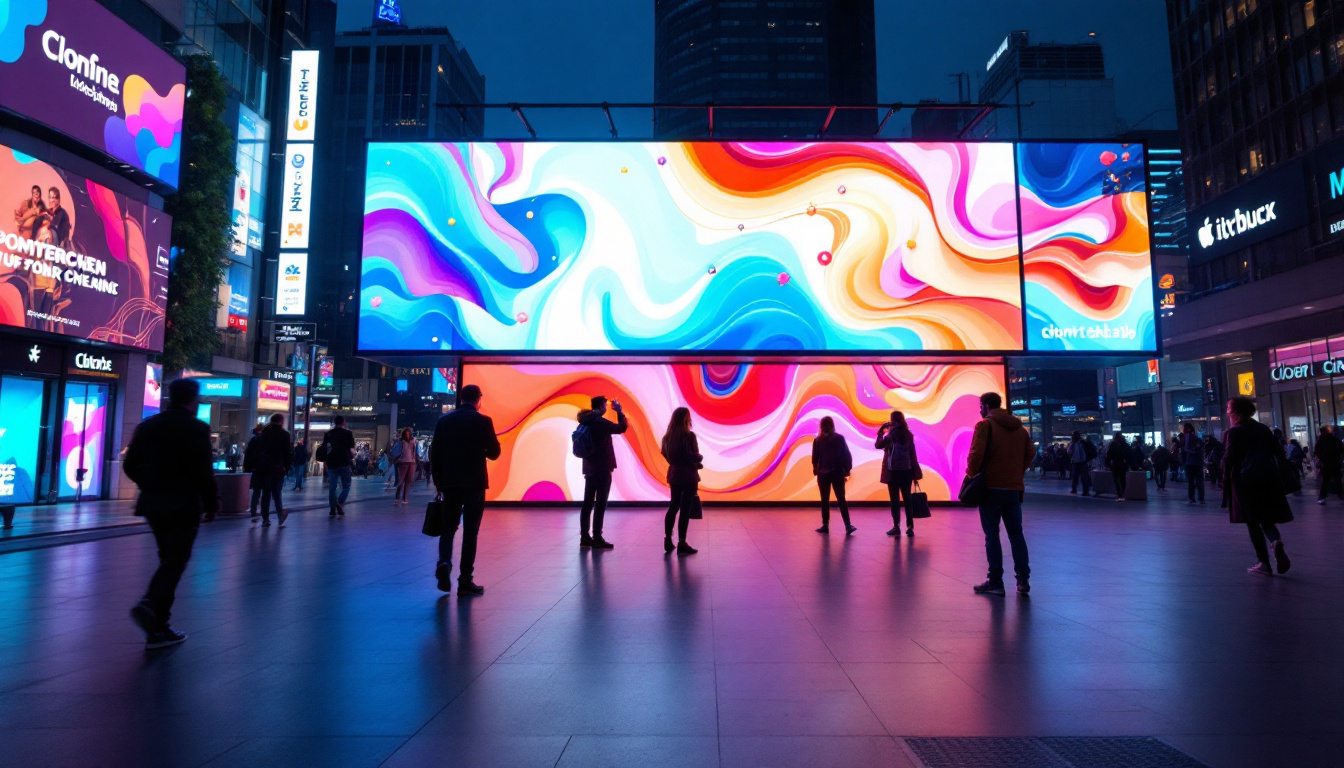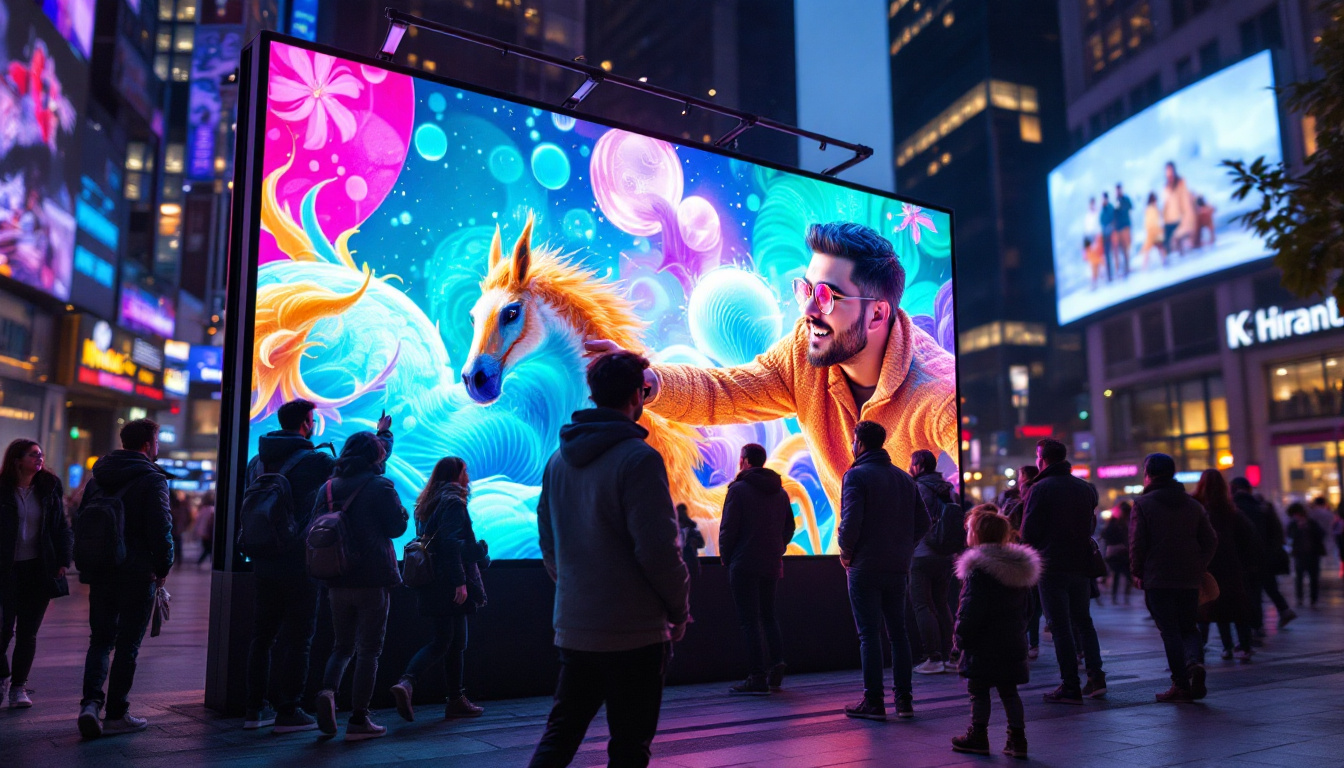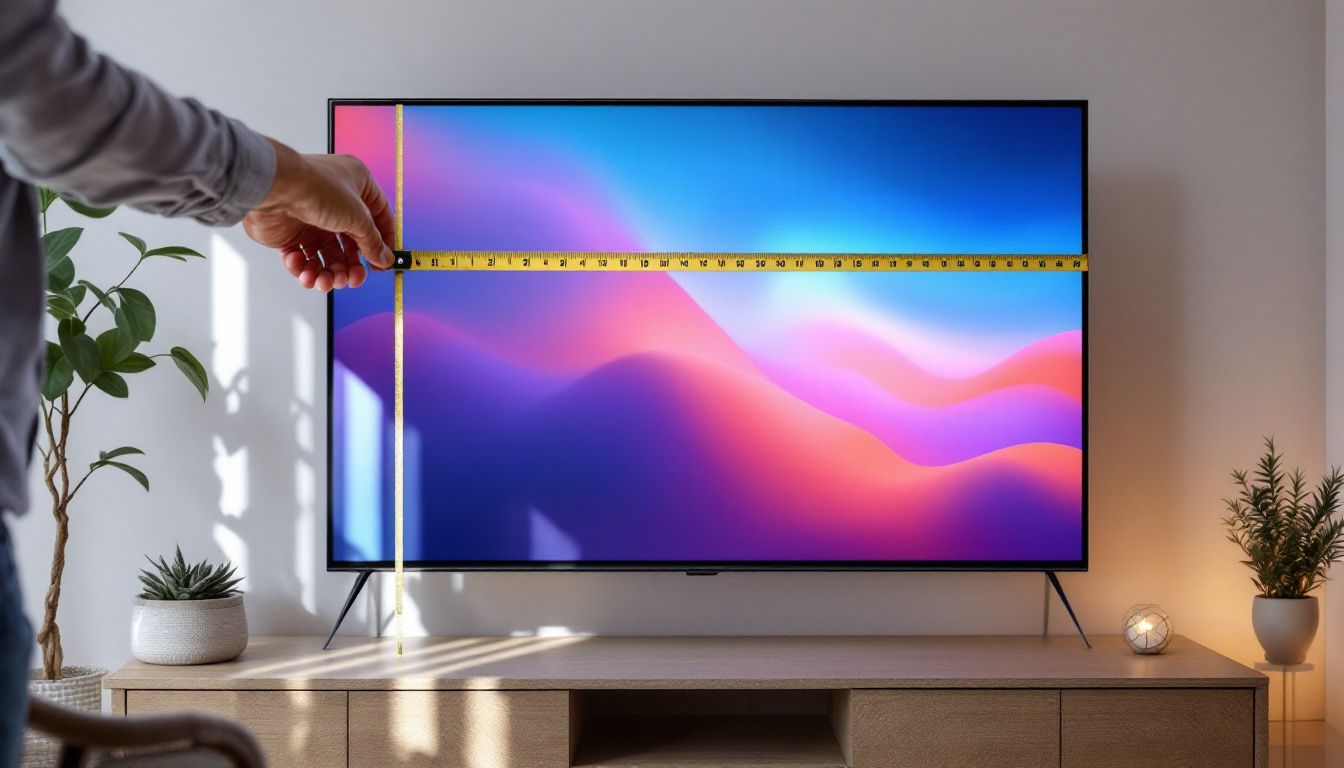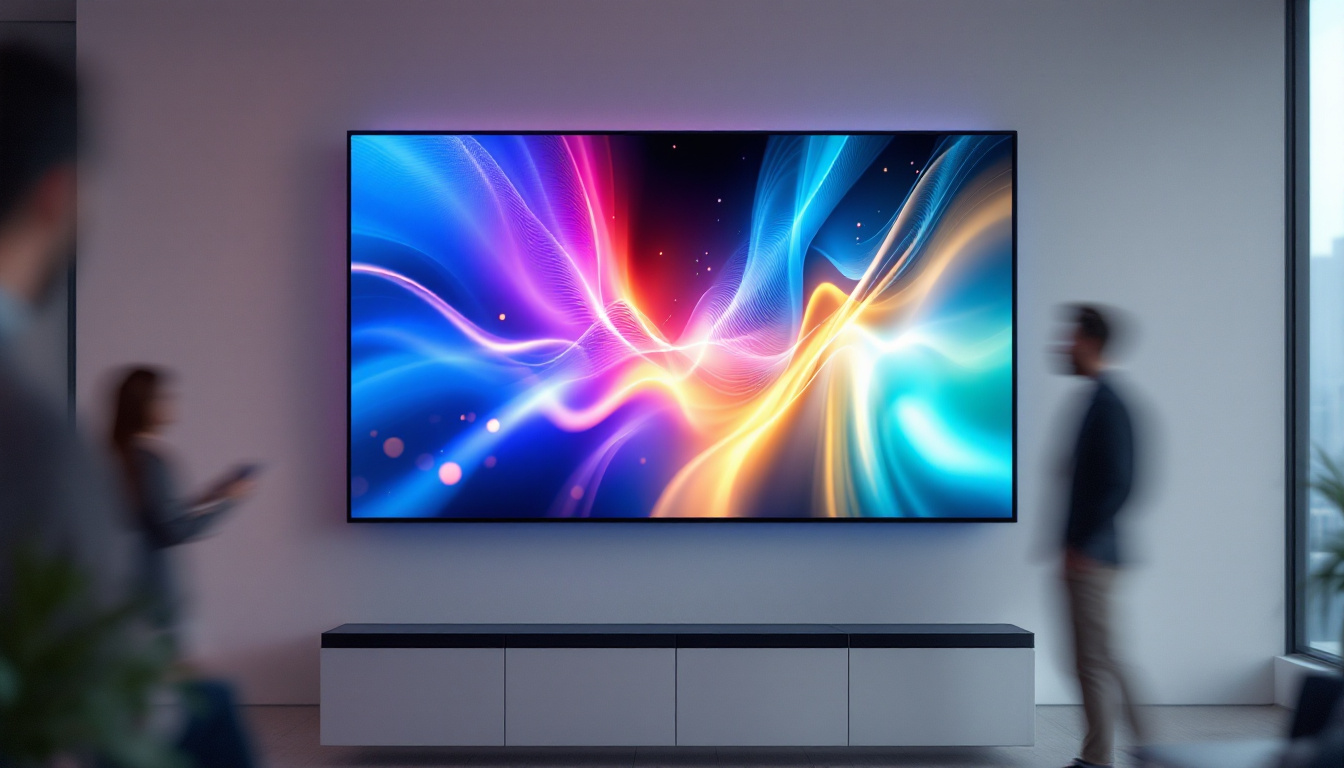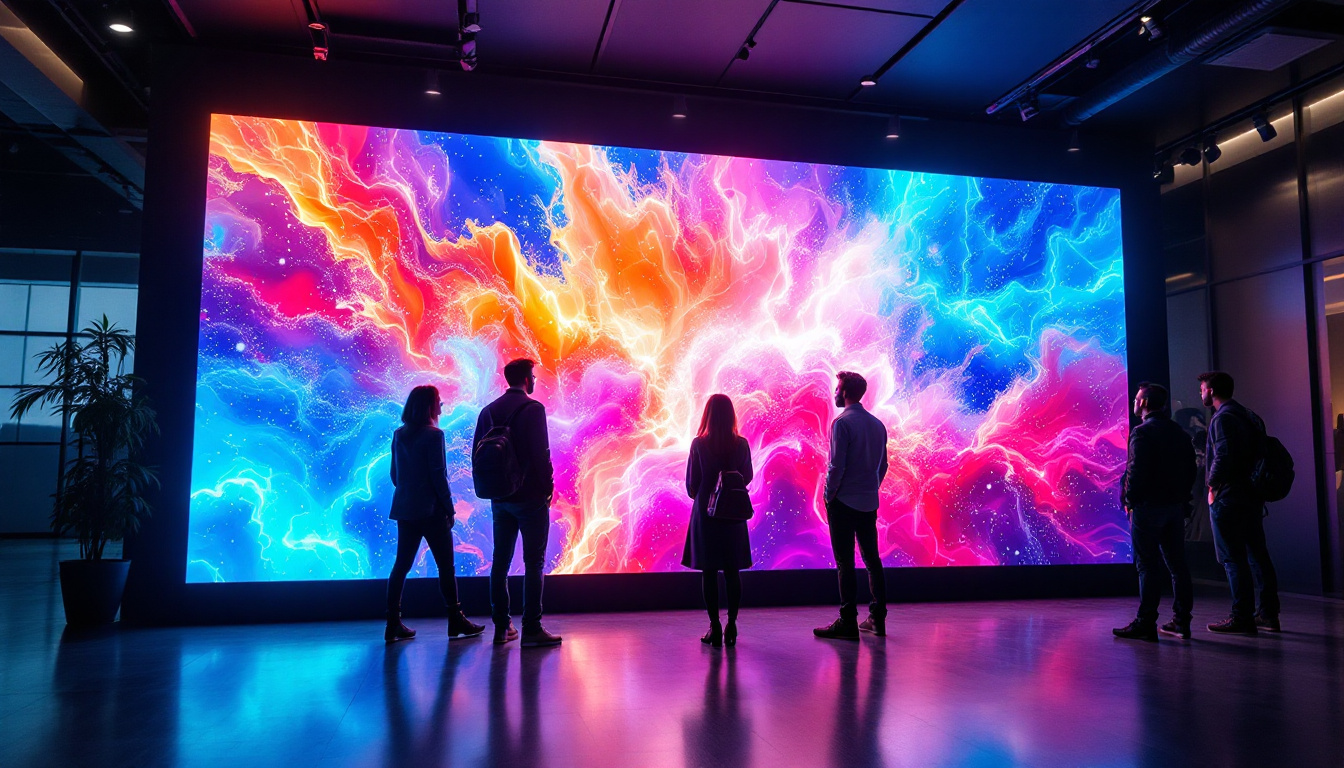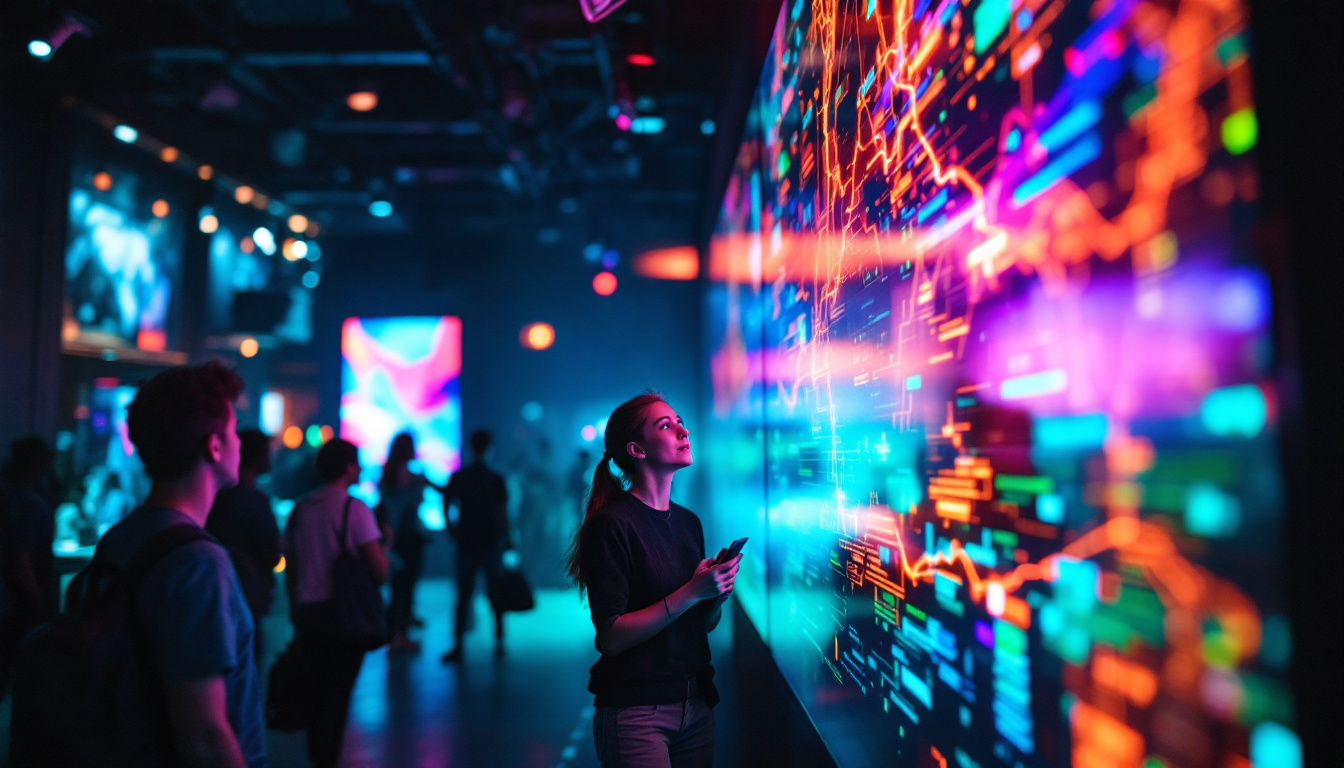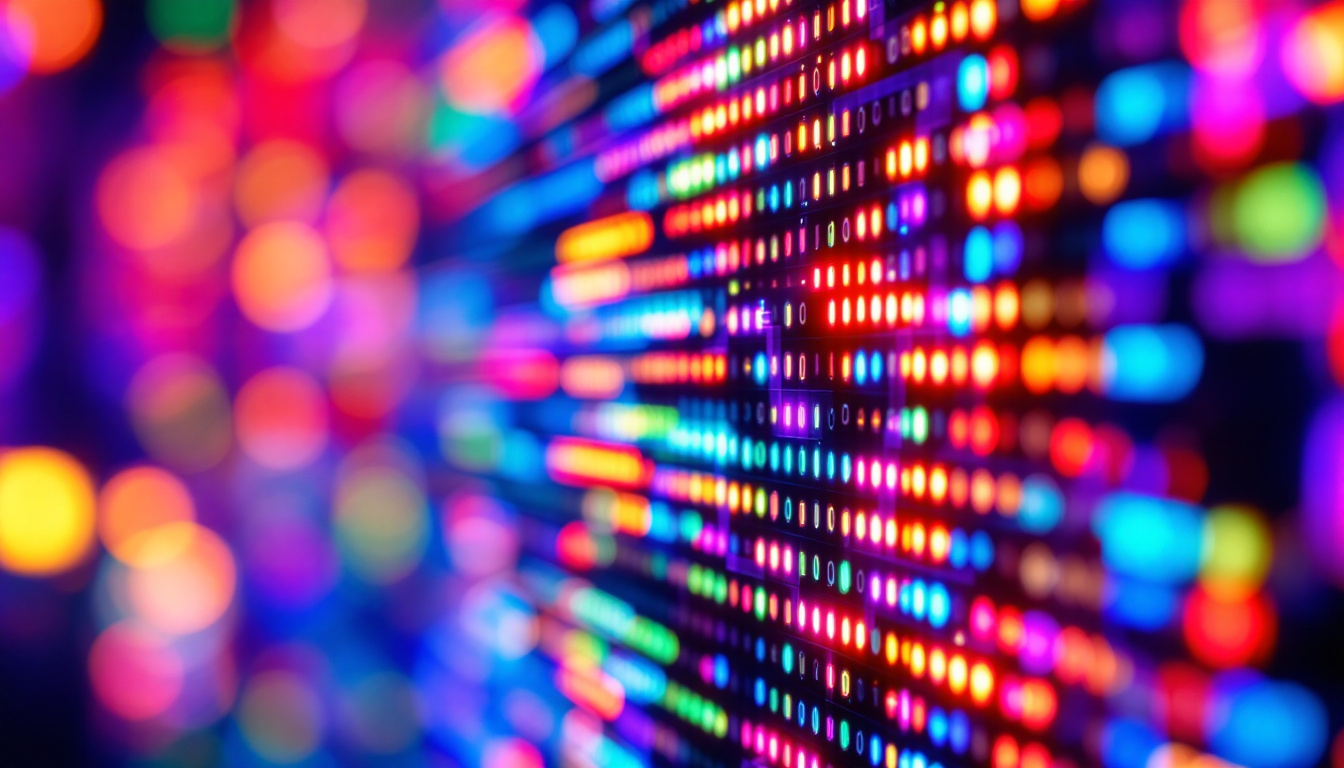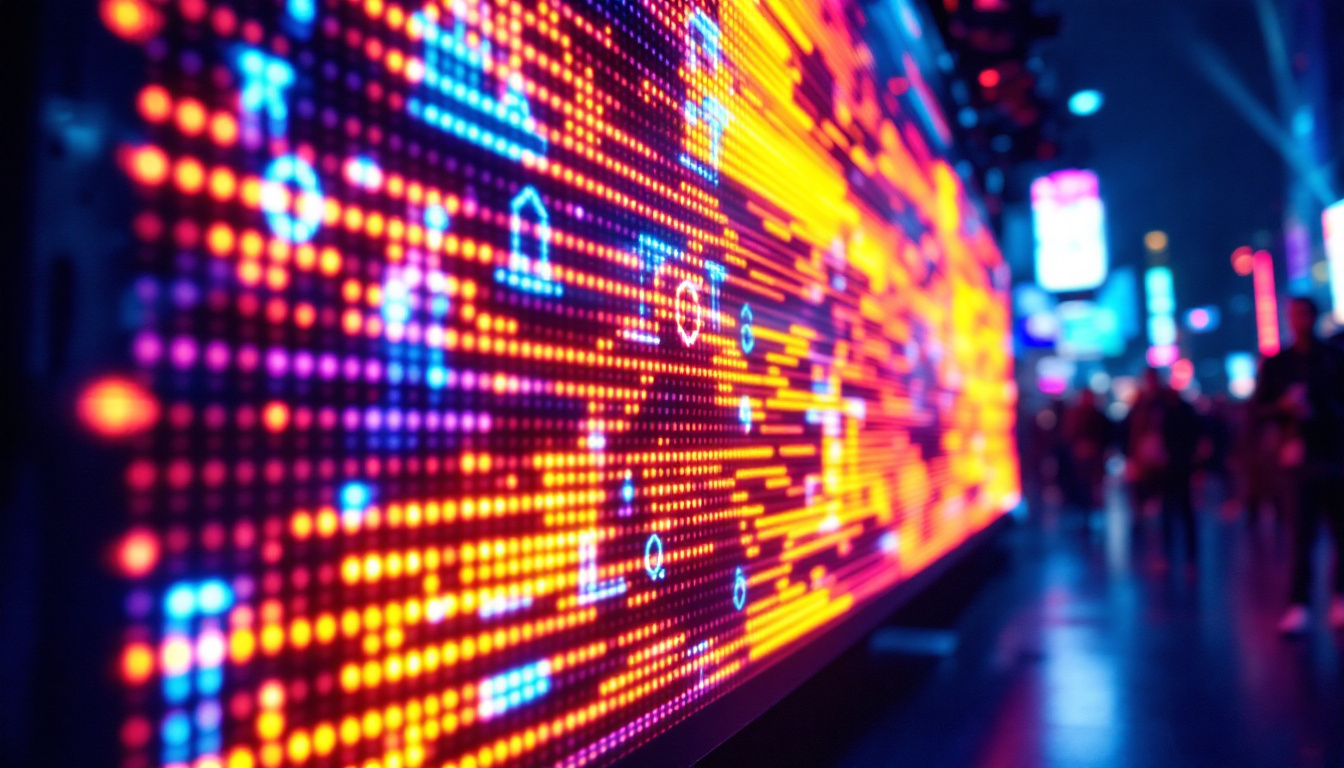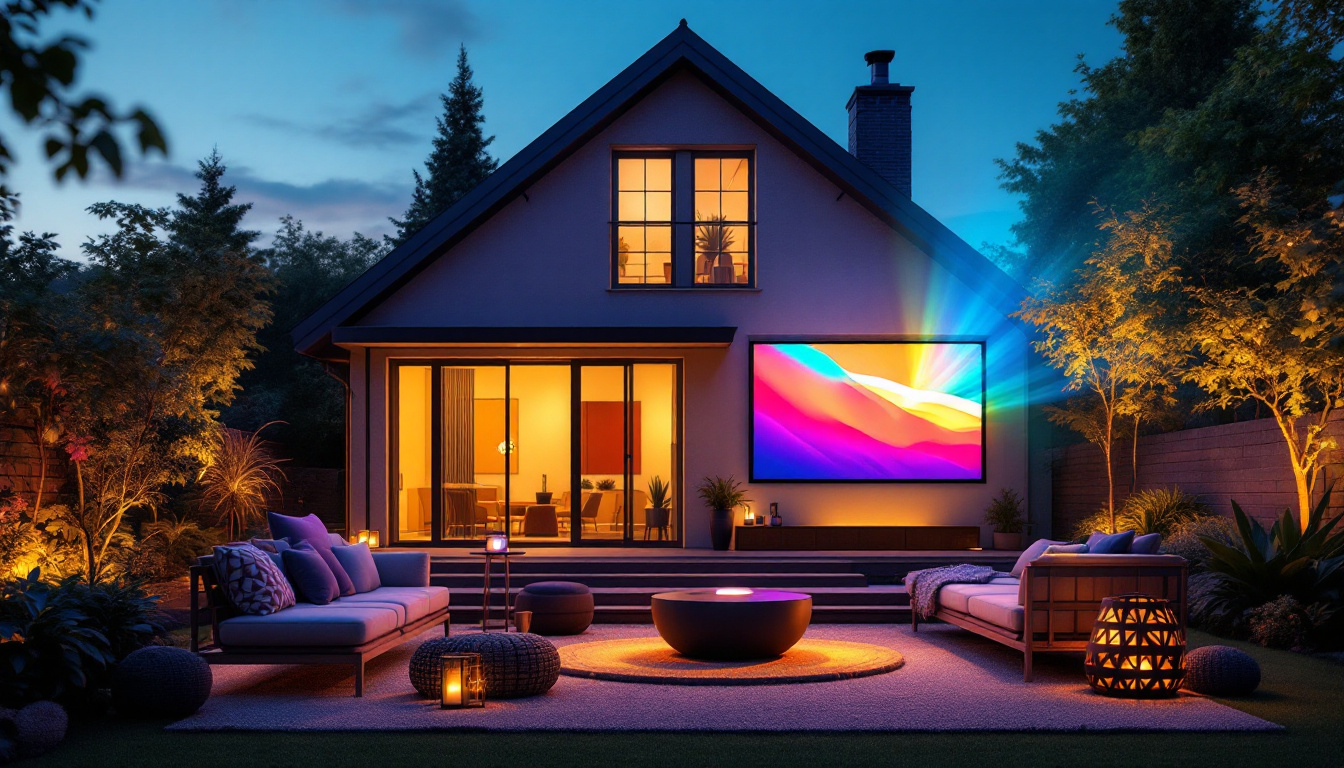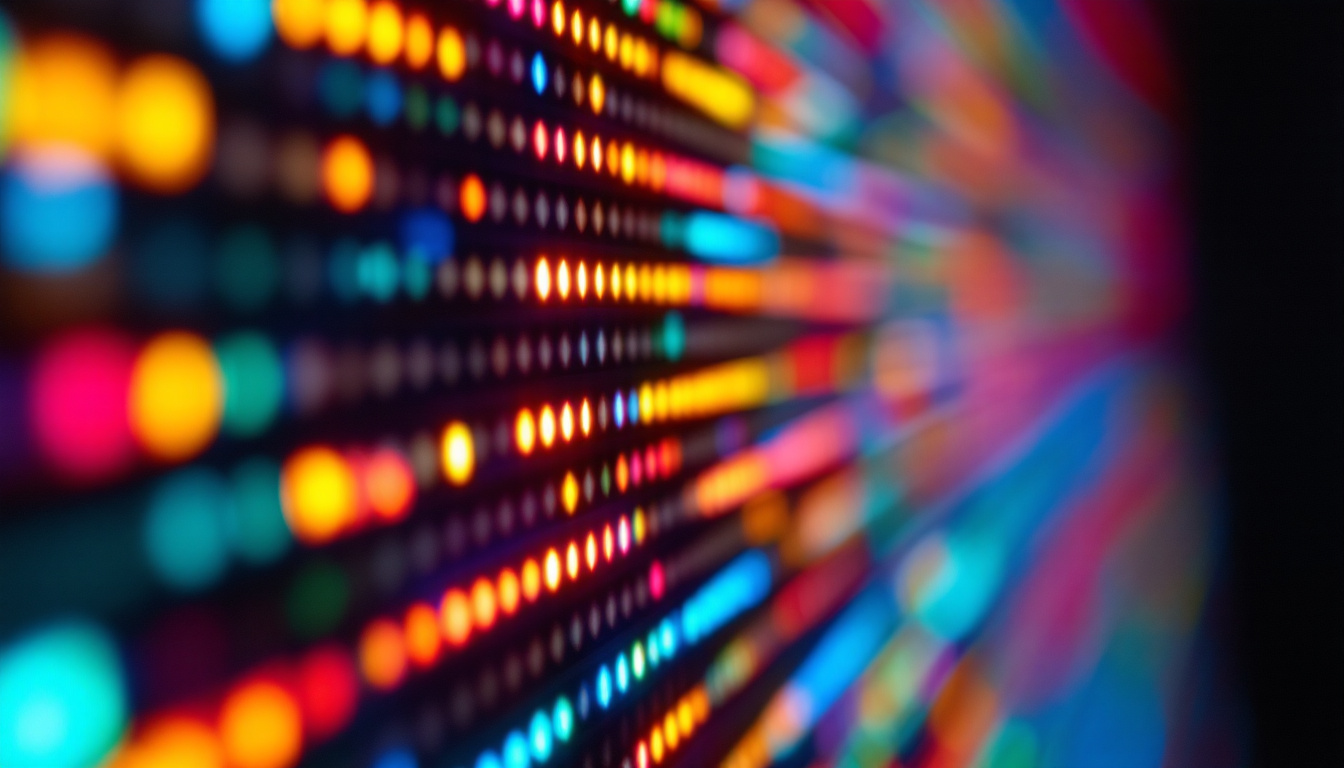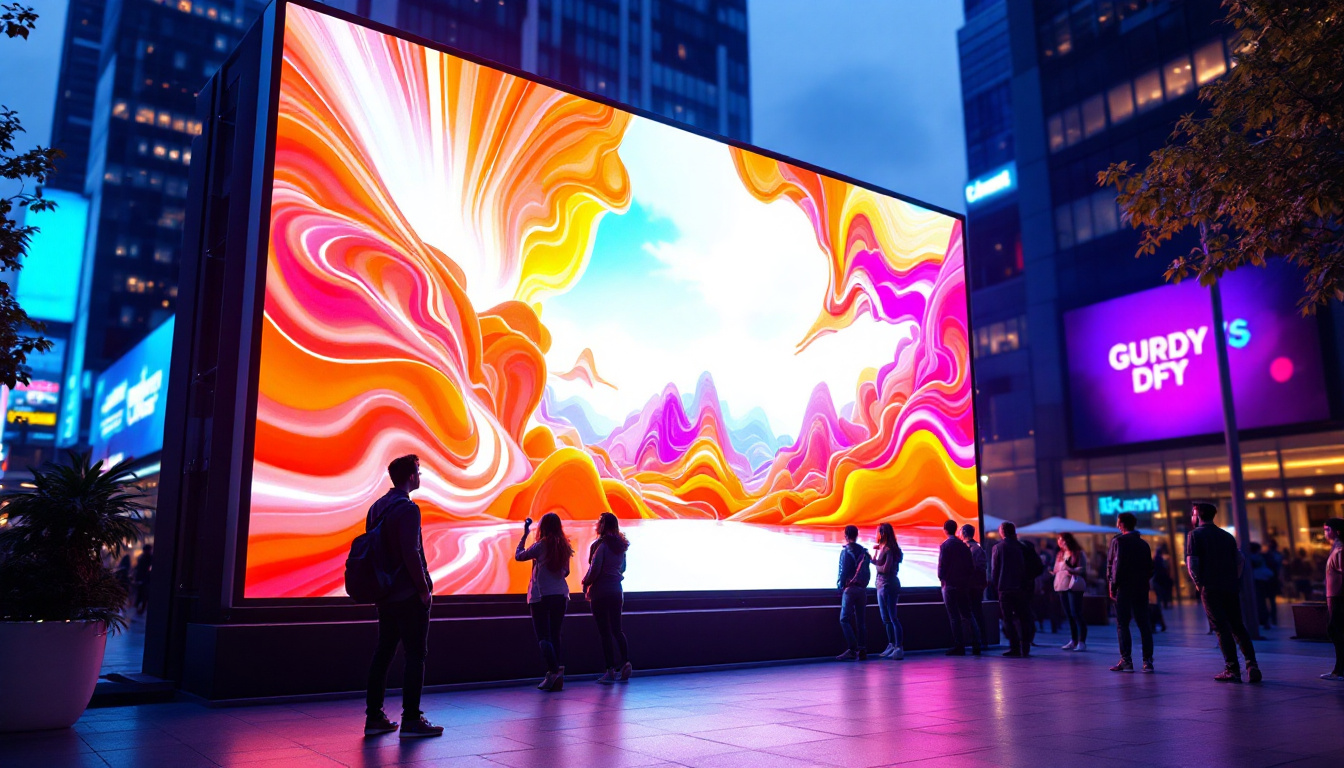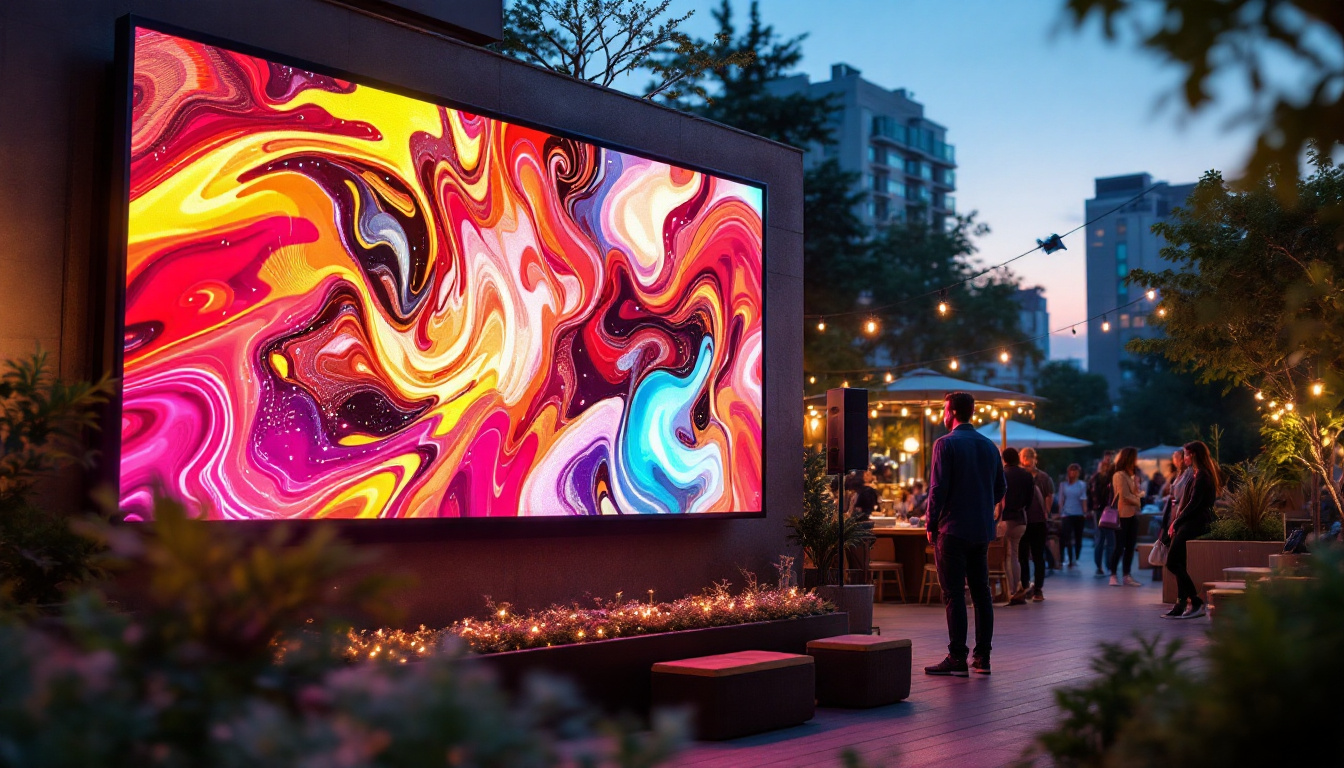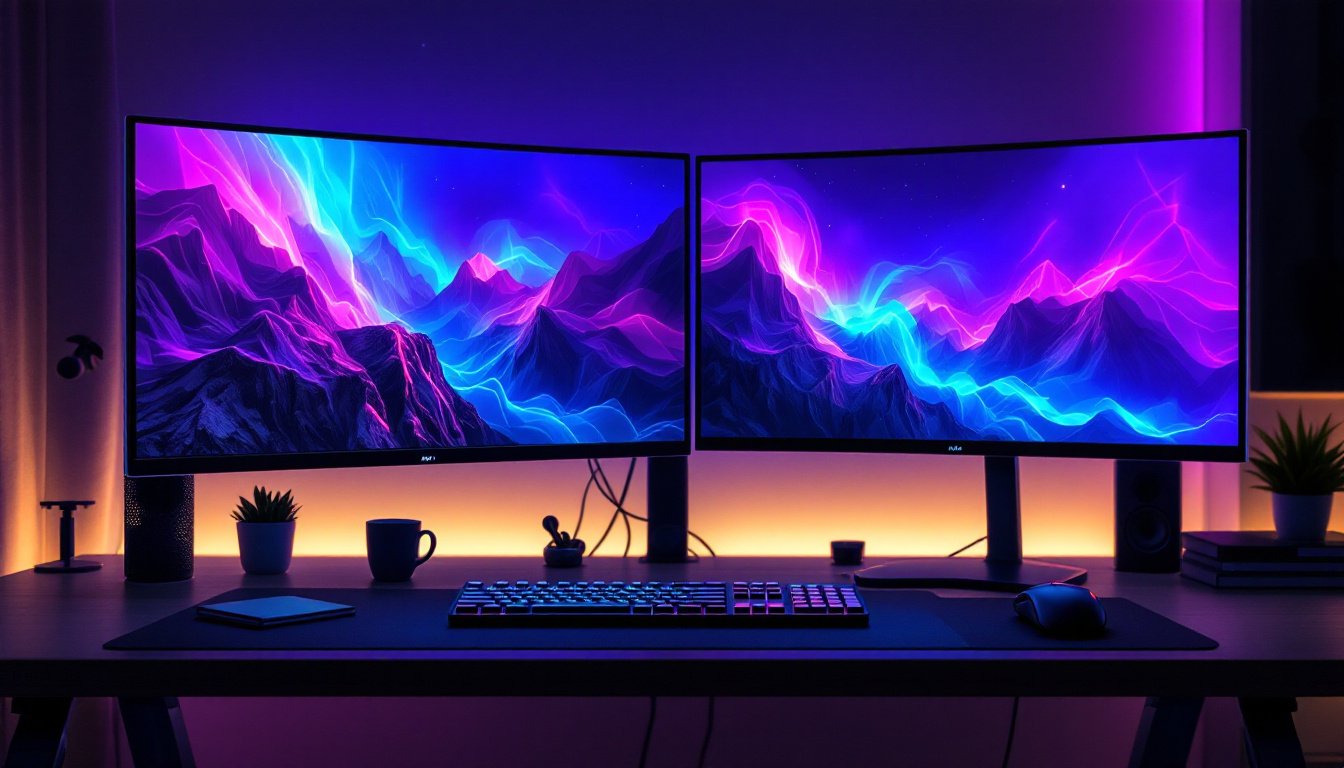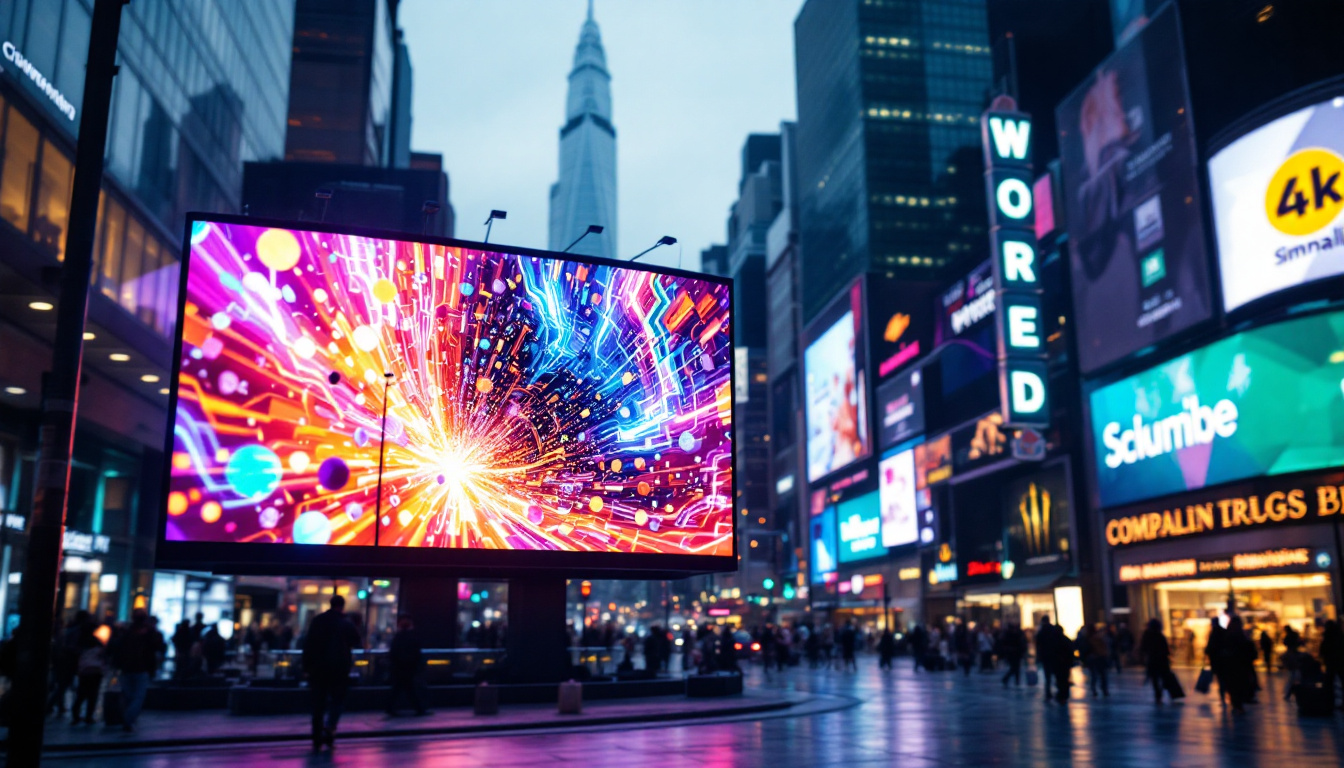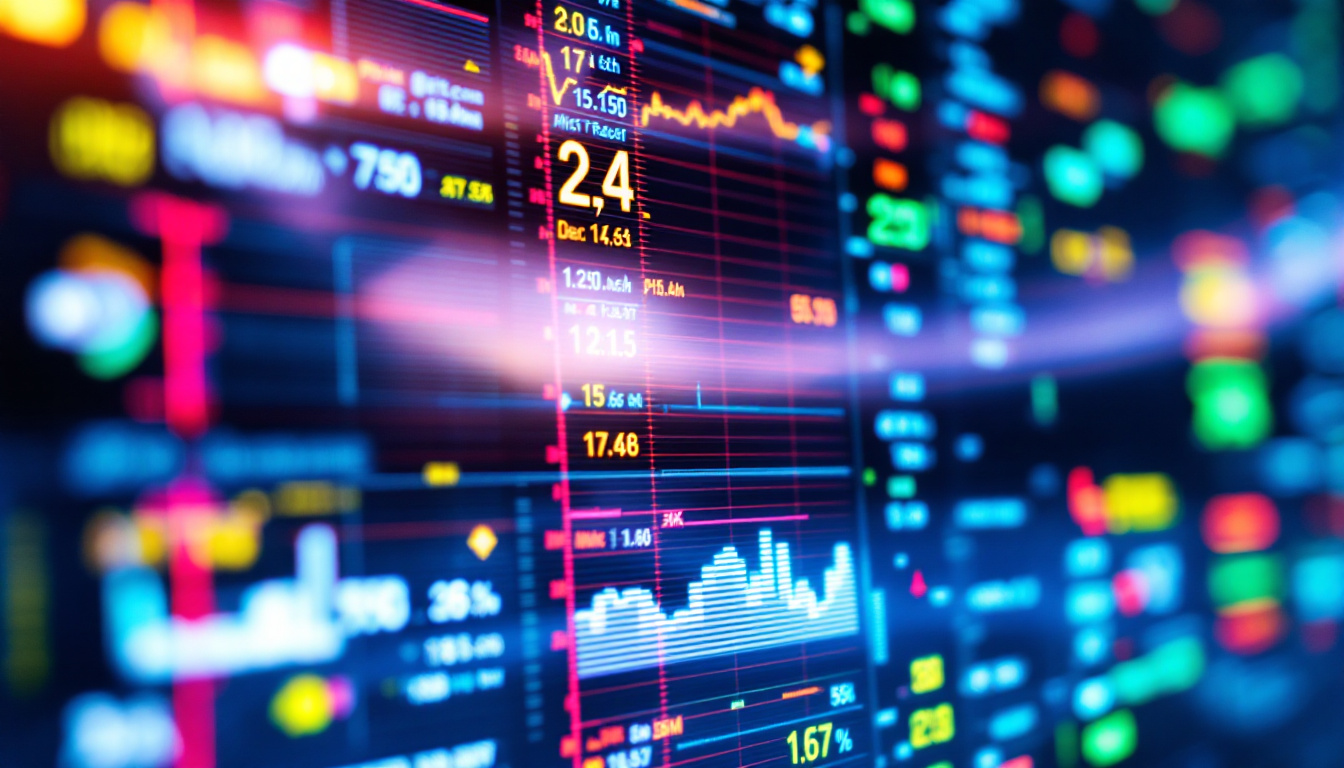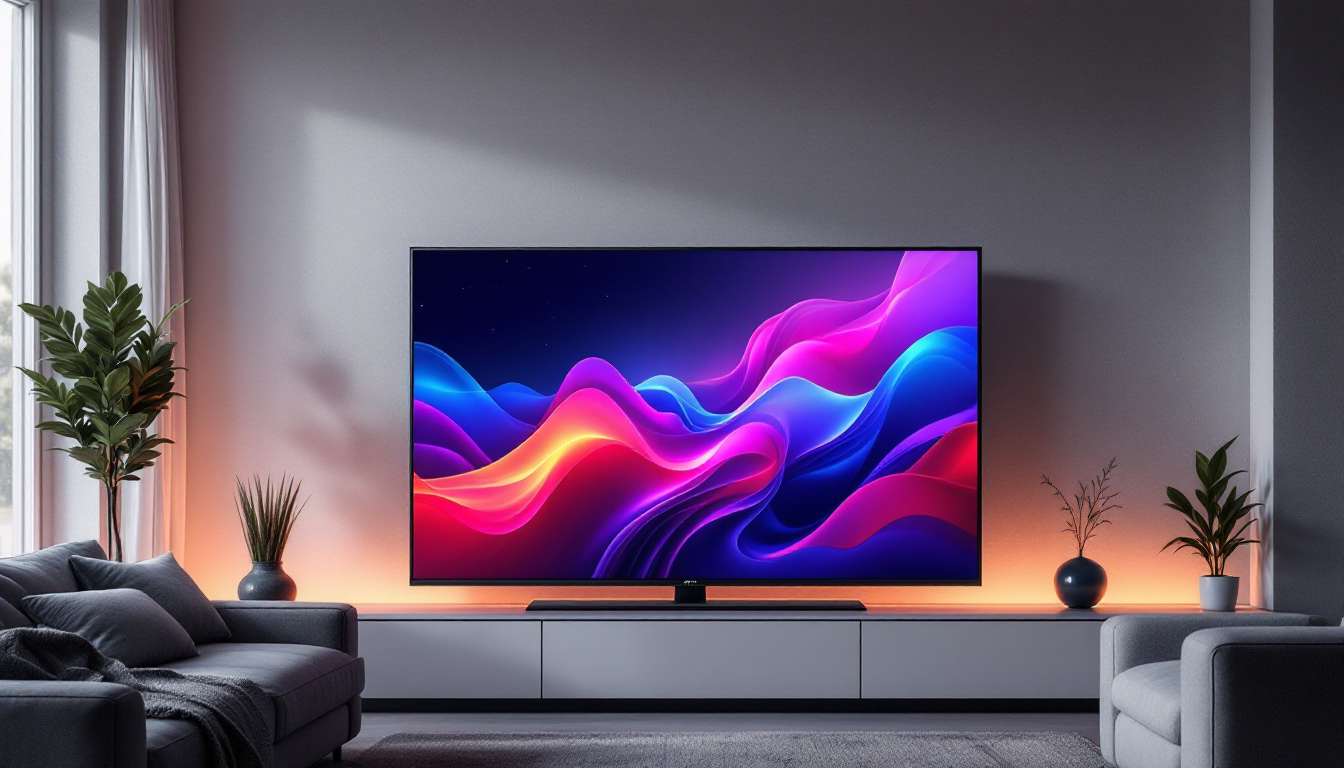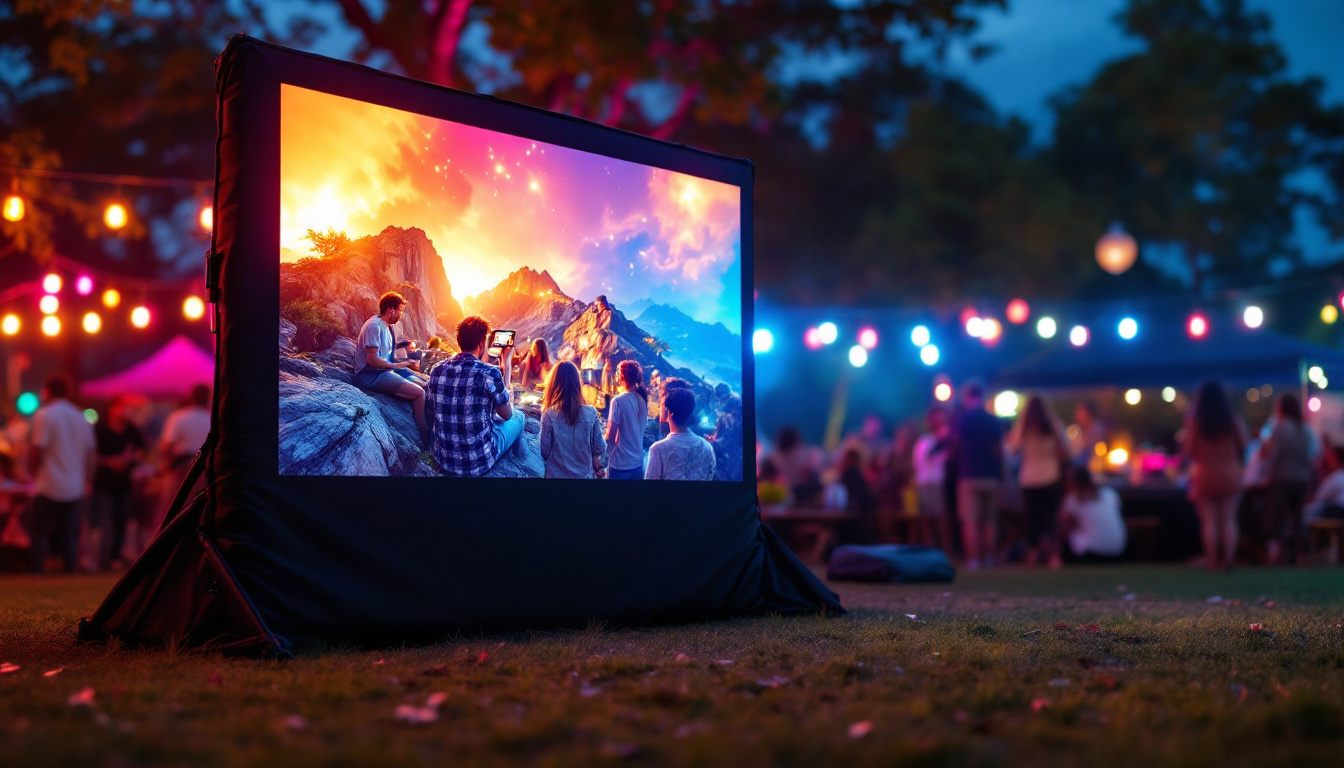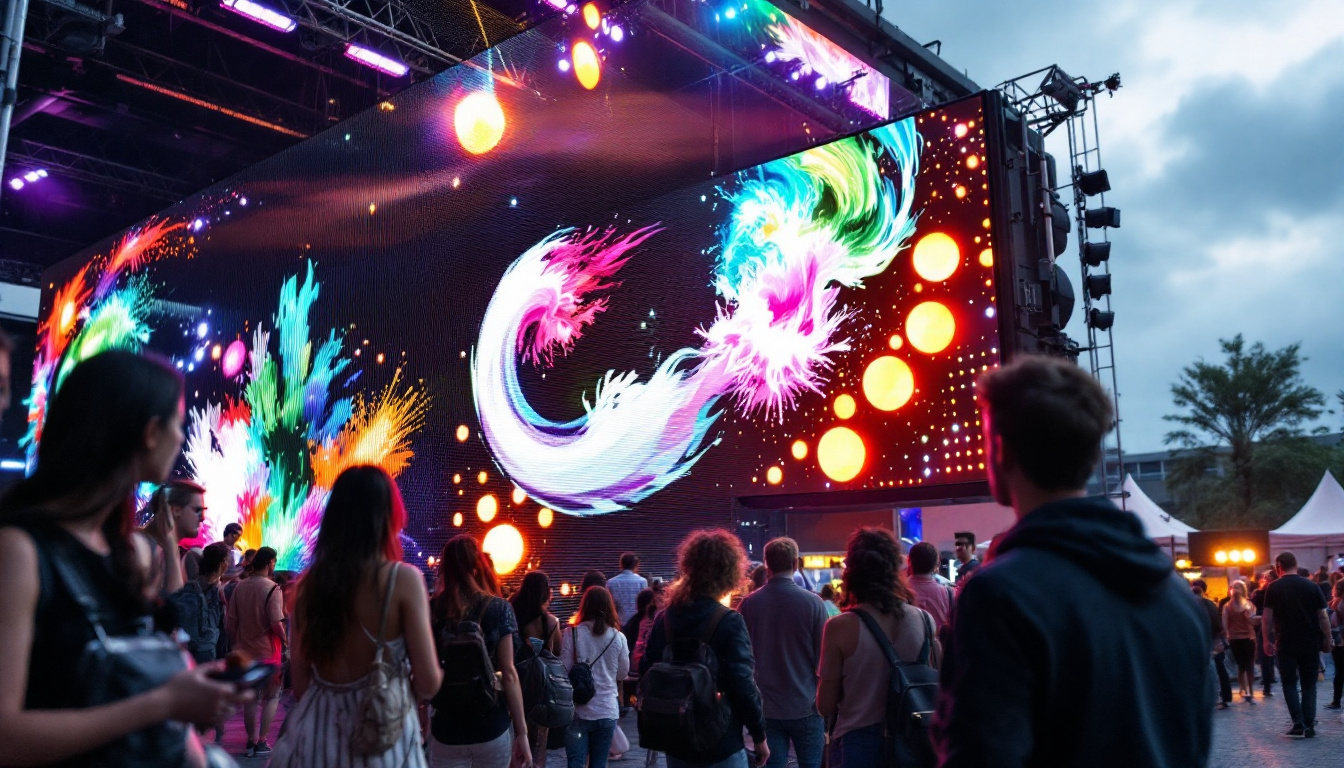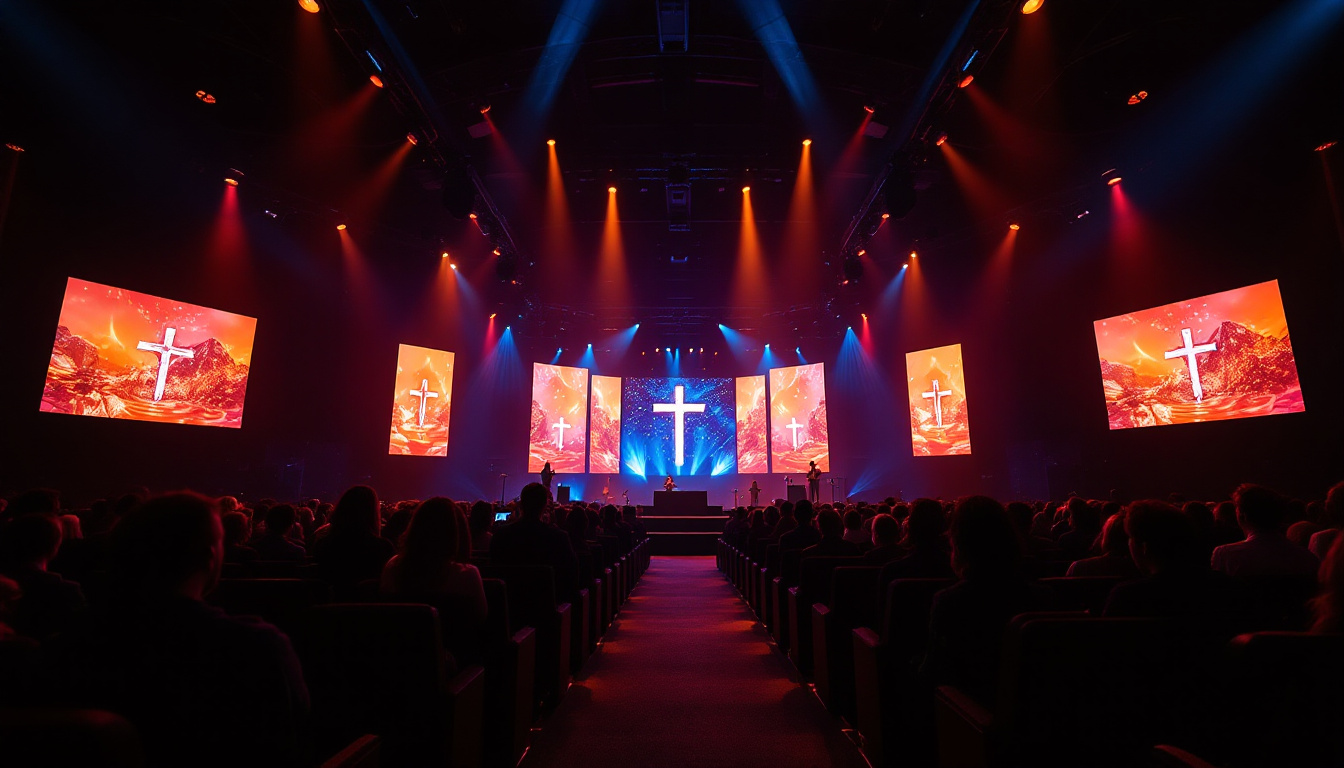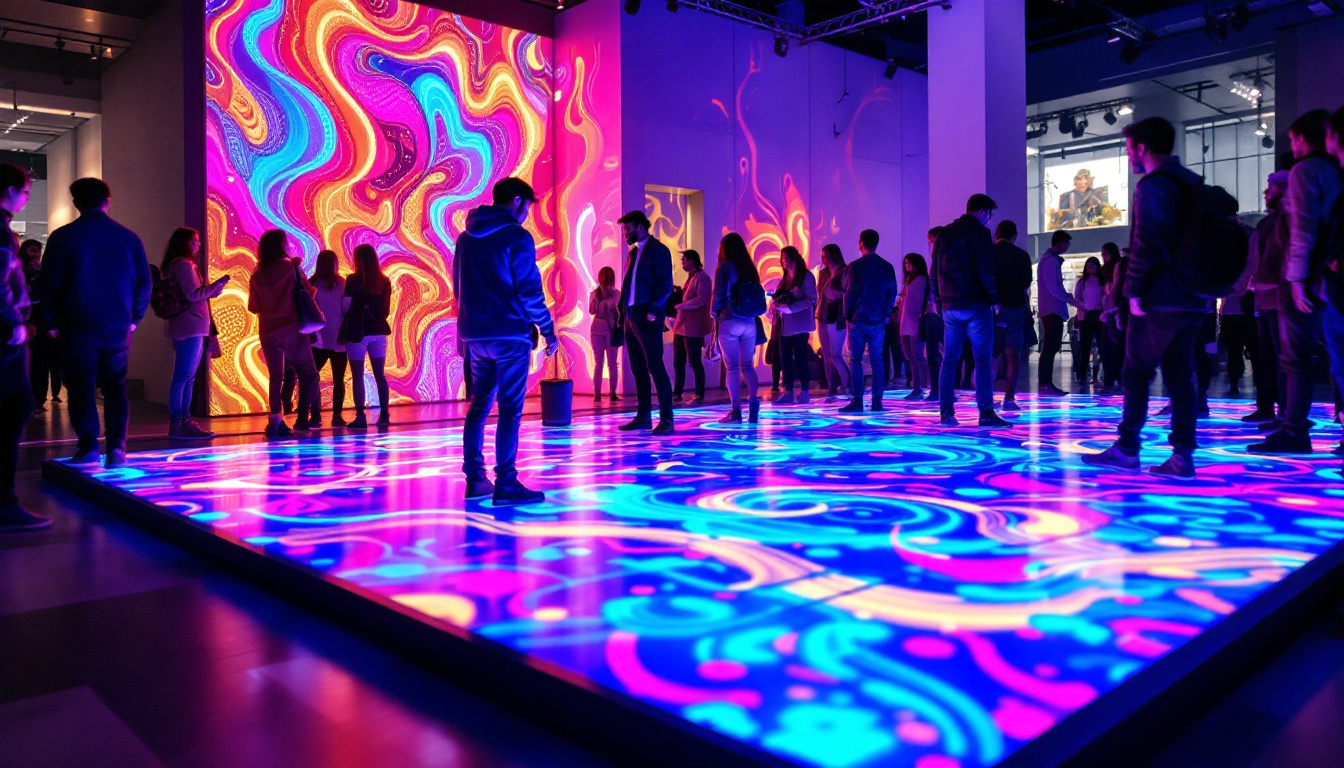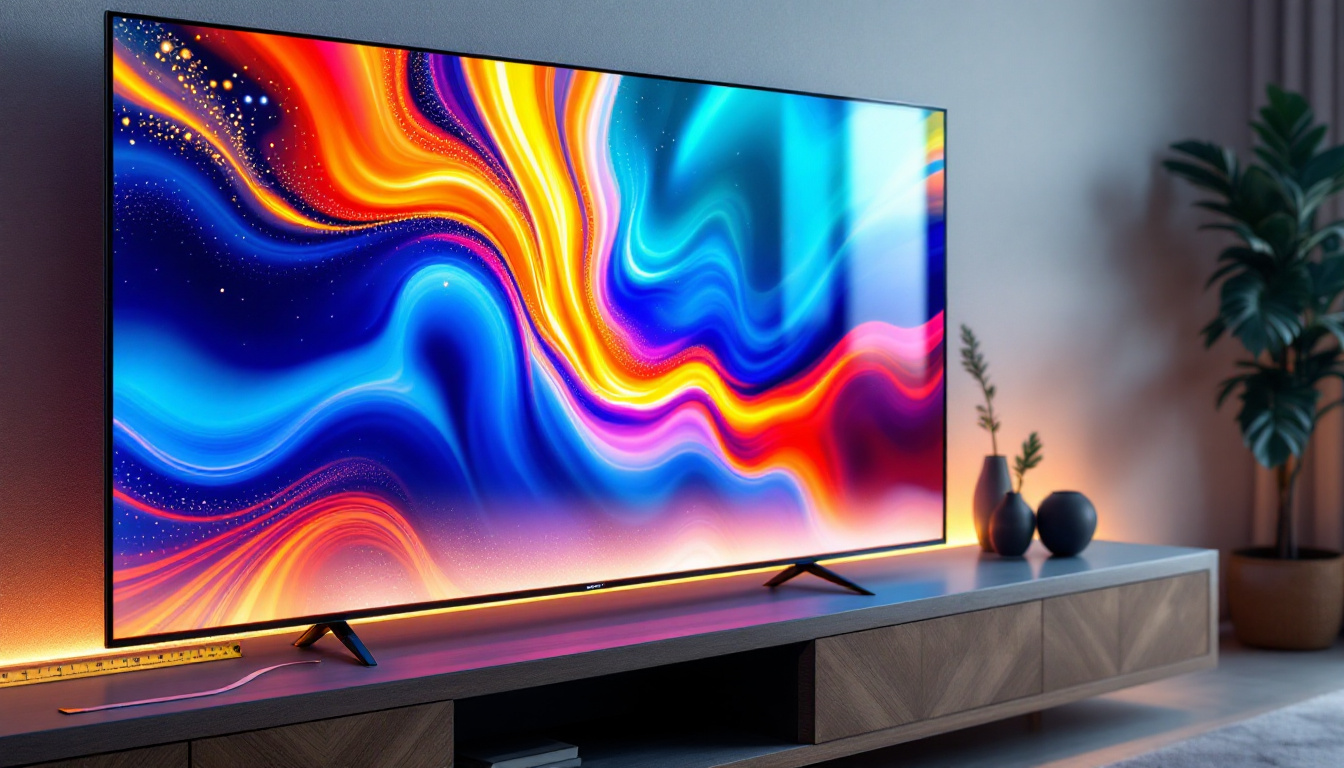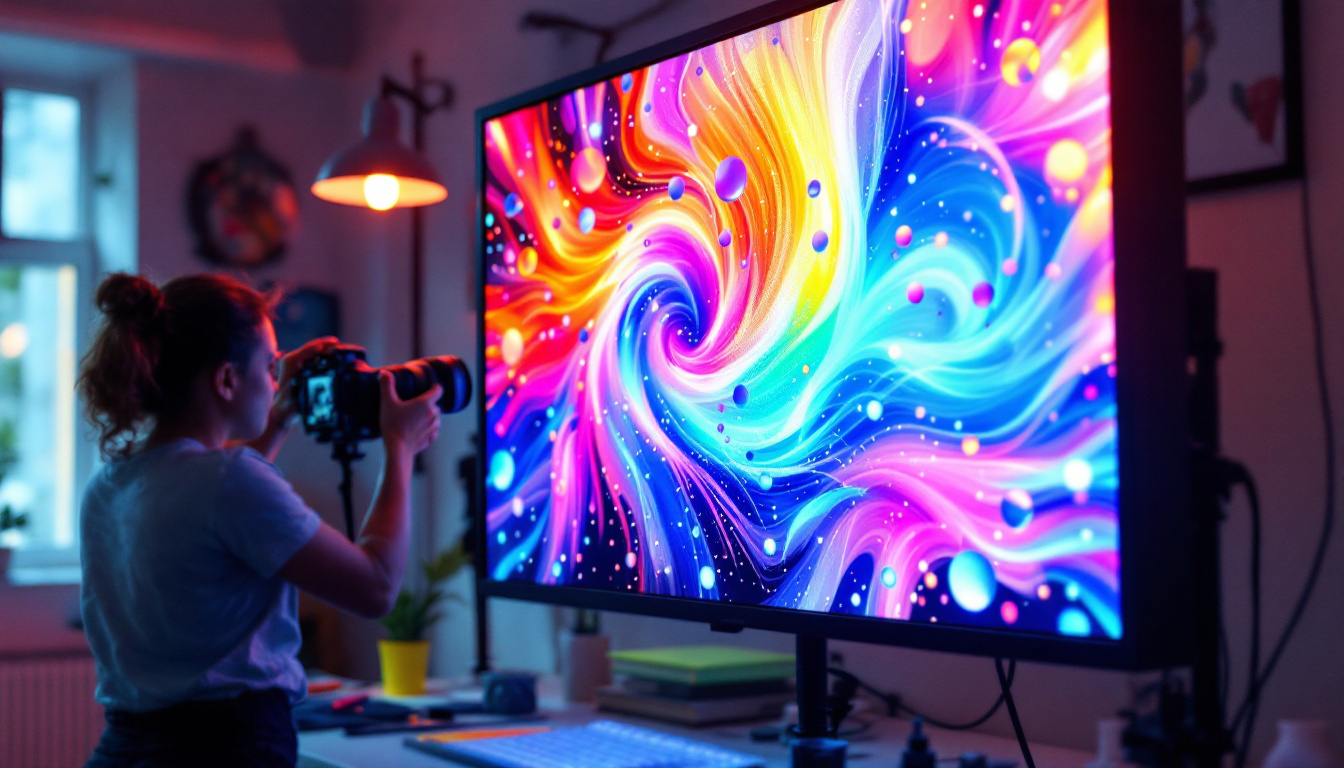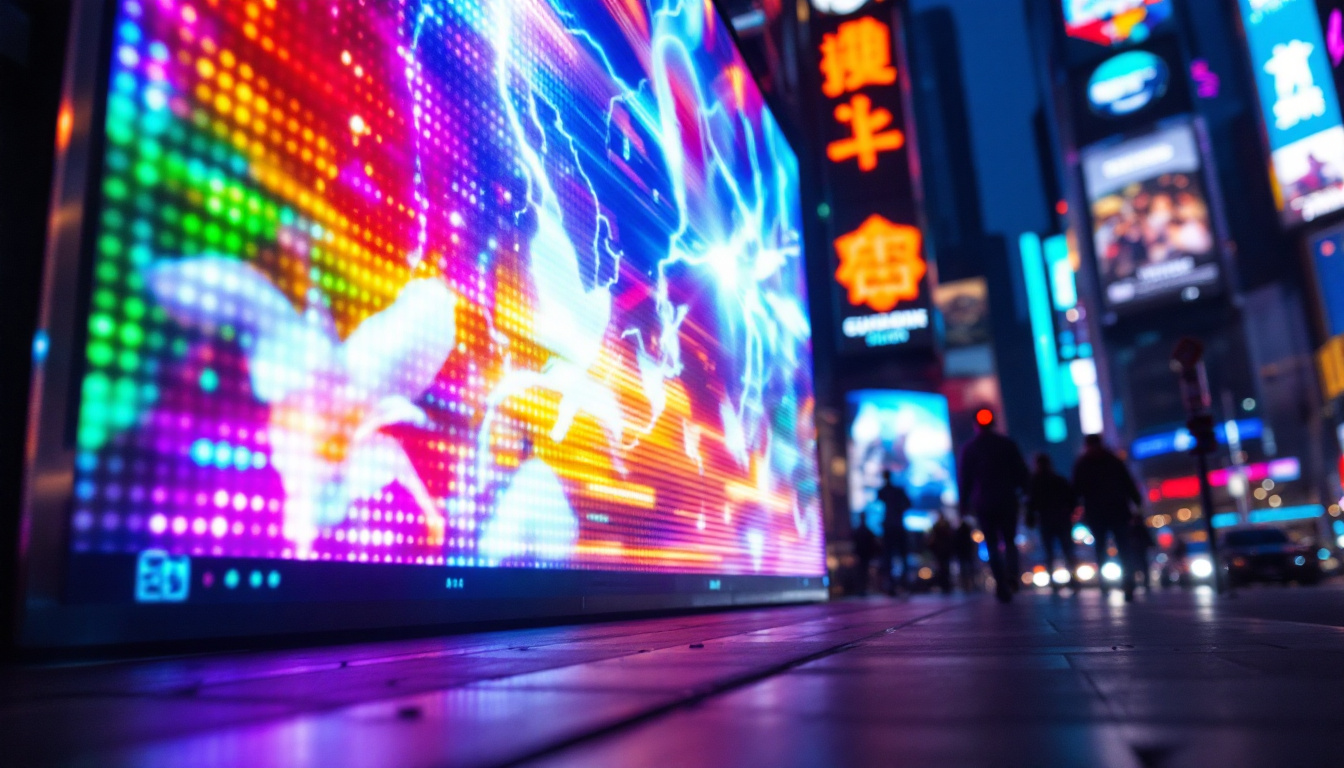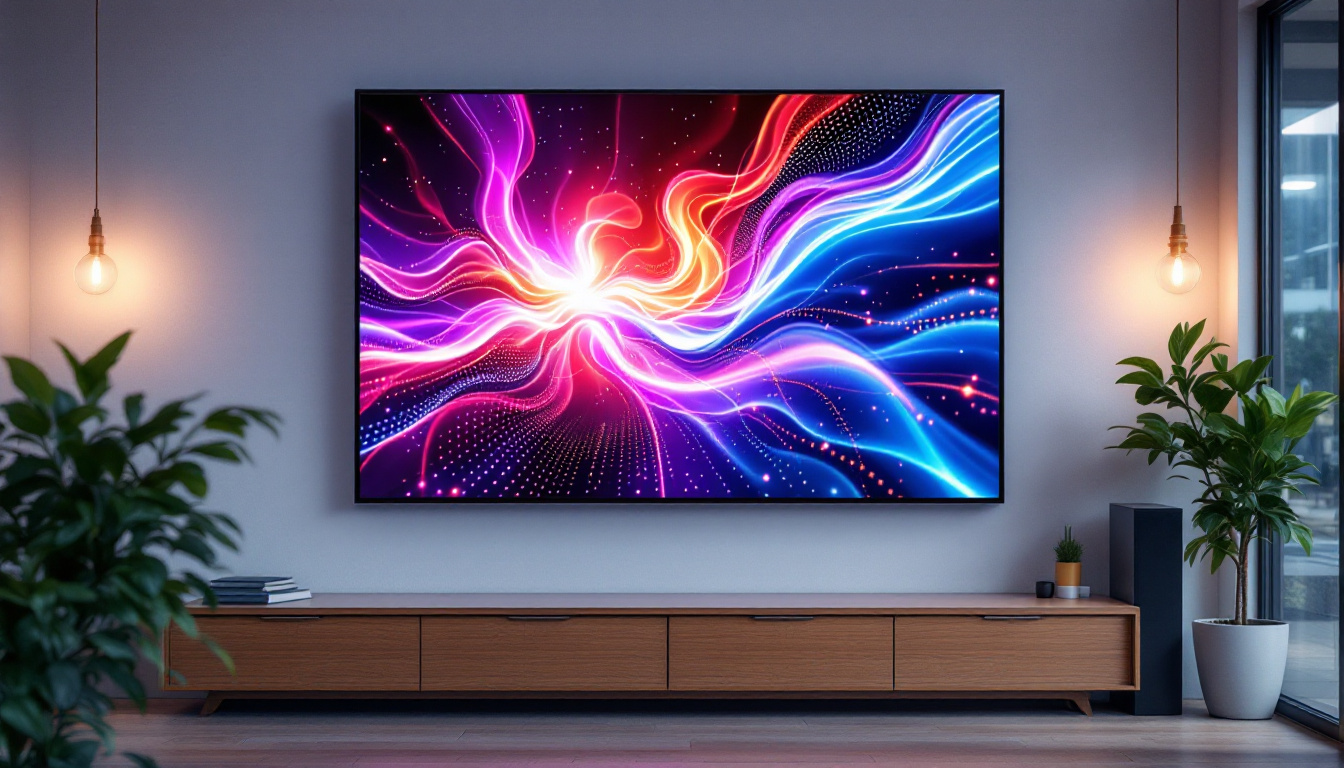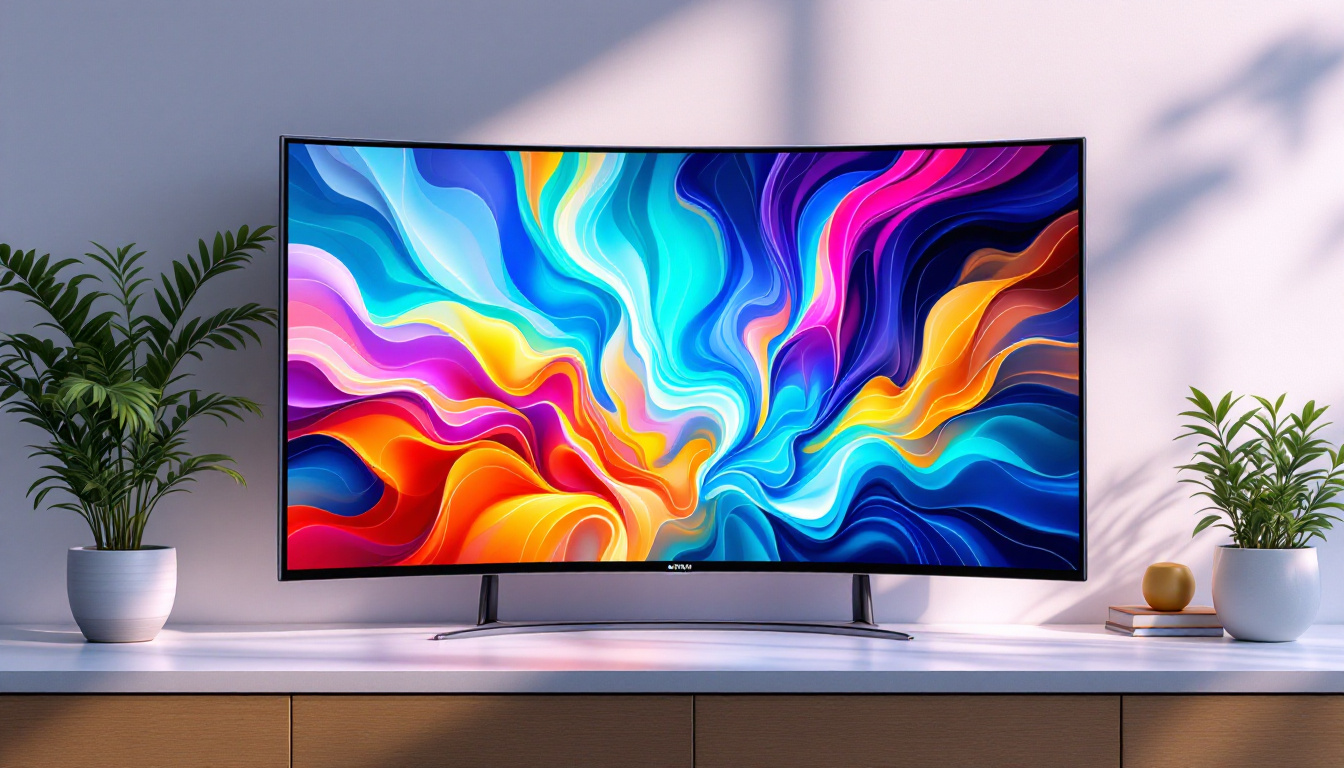In the modern world, visual communication has become increasingly important, and LED display boards have emerged as a powerful tool in this arena. These vibrant screens are used in various settings, from advertising and events to transportation and public information systems. Understanding how LED displays work and their applications can provide valuable insights into their significance in today’s digital landscape.
What is an LED Display Board?
LED display boards are large screens made up of numerous light-emitting diodes (LEDs) that work together to create images, videos, and text. Unlike traditional display technologies, LED displays offer higher brightness, better contrast, and greater energy efficiency. Their ability to display dynamic content makes them an ideal choice for a range of applications. From advertising to information dissemination, LED boards have revolutionized the way messages are communicated in public spaces, providing vibrant visuals that capture attention and engage audiences effectively.
Components of LED Display Boards
At the core of every LED display board are the individual LEDs, which are grouped into pixels. Each pixel consists of red, green, and blue (RGB) diodes that combine to produce a full spectrum of colors. The arrangement and density of these pixels determine the display’s resolution and clarity. High-density pixel configurations allow for sharper images and finer details, making them ideal for environments where viewers are close to the screen.
Other essential components include the display controller, which processes the input signals and manages the content displayed on the screen, and the power supply, which ensures that the LEDs receive the necessary voltage and current to operate efficiently. The housing or casing protects these components from environmental factors, making LED displays suitable for both indoor and outdoor use. Additionally, advanced thermal management systems are often integrated to dissipate heat generated by the LEDs, ensuring longevity and consistent performance even in demanding conditions.
Types of LED Display Boards
There are several types of LED display boards, each designed for specific applications. Common types include:
- Indoor LED Displays: These are typically used in venues such as shopping malls, conference rooms, and theaters. They offer high resolution and brightness suited for close viewing distances. Indoor displays often feature a softer luminosity, ensuring comfort for viewers and reducing glare in enclosed spaces.
- Outdoor LED Displays: Built to withstand harsh weather conditions, outdoor displays are larger and brighter, making them ideal for billboards, stadiums, and public events. These displays are engineered with protective coatings and robust casings to safeguard against rain, wind, and UV exposure, ensuring they remain operational and visually striking in all weather.
- Mobile LED Displays: These portable boards can be mounted on trucks or trailers, allowing for dynamic advertising and event promotion on the go. Their flexibility makes them perfect for festivals, concerts, and sporting events, where they can be repositioned to maximize visibility and impact.
In addition to these common types, there are also specialized LED displays such as transparent LED screens, which allow for visibility through the display while still showcasing vibrant content, and flexible LED panels that can be curved or shaped to fit unique architectural designs. This versatility opens up new avenues for creativity in advertising and design, enabling businesses to craft eye-catching displays that stand out in a crowded marketplace.
How LED Displays Work
The operation of LED display boards is based on the principle of light emission from diodes. When an electric current passes through the LED, it emits light. The intensity and color of the light can be controlled by adjusting the current flowing through each diode.
Color Mixing and Pixel Control
Color mixing is achieved through the combination of the RGB components in each pixel. By varying the intensity of each color, a wide range of colors can be produced. For instance, combining red and green light at full intensity creates yellow, while mixing all three colors at full intensity results in white light.
Advanced display controllers use sophisticated algorithms to manage pixel control, ensuring smooth transitions and accurate color reproduction. This technology allows for the display of high-definition video and images, making LED boards a popular choice for multimedia presentations.
Brightness and Contrast
One of the standout features of LED displays is their exceptional brightness. Outdoor displays, in particular, can achieve brightness levels exceeding 10,000 nits, ensuring visibility even in direct sunlight. Indoor displays, while not as bright, still provide excellent contrast ratios, enhancing the viewing experience in dimly lit environments.
Contrast is crucial for ensuring that images and text are easily readable. High contrast ratios allow for sharper images and clearer text, making LED displays effective for conveying information quickly and efficiently.
Applications of LED Display Boards
LED display boards have found applications across various industries, each leveraging their unique capabilities to enhance communication and engagement. Here are some of the most common uses:
Advertising and Marketing
One of the most prominent applications of LED displays is in advertising. Businesses utilize these boards to capture attention with vibrant visuals and dynamic content. From large billboards in urban areas to smaller displays in retail stores, LED screens provide an effective medium for promoting products and services.
Digital signage powered by LED technology allows for real-time updates, enabling advertisers to change messages quickly based on factors such as time of day, weather conditions, or audience demographics. This flexibility enhances marketing strategies and improves customer engagement.
Transportation and Wayfinding
LED display boards play a vital role in transportation systems, providing real-time information to passengers. Airports, train stations, and bus terminals use LED screens to display arrival and departure times, gate information, and service announcements. The clarity and visibility of these displays ensure that travelers receive timely updates, enhancing their overall experience.
In urban environments, LED displays are also employed for wayfinding, guiding pedestrians and drivers with directional information and alerts. This application improves navigation and contributes to safer travel.
Events and Entertainment
In the realm of events and entertainment, LED display boards are indispensable. Concerts, sports events, and festivals utilize large screens to enhance the audience experience. These displays can show live feeds, promotional content, and interactive elements, creating an immersive atmosphere for attendees.
Additionally, event organizers can use LED boards for branding purposes, displaying logos and sponsor messages prominently throughout the venue. This not only adds to the visual appeal but also provides valuable advertising opportunities.
Advantages of LED Display Boards
The popularity of LED display boards can be attributed to several advantages that set them apart from traditional display technologies. Here are some key benefits:
Energy Efficiency
LED technology is known for its energy efficiency. Compared to incandescent or fluorescent lighting, LED displays consume significantly less power while providing greater brightness. This efficiency translates to lower operational costs, making LED displays a cost-effective choice for businesses and organizations.
Longevity and Durability
LED display boards have a long lifespan, often exceeding 100,000 hours of operation. This durability reduces the need for frequent replacements, further contributing to cost savings. Additionally, many LED displays are designed to withstand harsh environmental conditions, making them suitable for outdoor use without compromising performance.
High Visibility and Versatility
The brightness and clarity of LED displays ensure high visibility in various lighting conditions. Whether used indoors or outdoors, these displays can effectively convey messages and information. Their versatility allows for a wide range of applications, from advertising and information dissemination to artistic displays and interactive installations.
Challenges and Considerations
While LED display boards offer numerous advantages, there are also challenges and considerations that users should be aware of. Understanding these factors can help in making informed decisions regarding their implementation.
Initial Investment Costs
One of the primary challenges associated with LED displays is the initial investment cost. High-quality LED screens can be expensive to purchase and install, which may deter some businesses from adopting this technology. However, it is essential to consider the long-term savings in energy costs and maintenance when evaluating the overall return on investment.
Content Management
Effective content management is crucial for maximizing the impact of LED displays. Businesses must invest in software and systems to create, schedule, and update content regularly. This requires a commitment to maintaining fresh and engaging material, which can be resource-intensive.
Environmental Impact
As with any technology, there are environmental considerations associated with LED displays. While they are more energy-efficient than traditional lighting, the production and disposal of electronic components can contribute to electronic waste. It is essential for businesses to adopt sustainable practices in sourcing and disposing of LED technology to minimize their environmental footprint.
The Future of LED Display Technology
The future of LED display technology looks promising, with ongoing advancements poised to enhance performance and expand applications. Innovations in pixel density, color accuracy, and energy efficiency are continually improving the quality of LED displays.
Integration with Smart Technology
As smart technology becomes increasingly prevalent, LED displays are expected to integrate seamlessly with other digital systems. This integration will enable real-time data sharing, personalized content delivery, and enhanced interactivity, creating more engaging experiences for users.
Emergence of Flexible and Transparent Displays
The development of flexible and transparent LED displays is another exciting trend. These displays can be shaped to fit unconventional spaces and can be integrated into windows and other surfaces, expanding the possibilities for creative applications in architecture and design.
Enhanced Interactivity and User Engagement
Future LED displays are likely to incorporate advanced interactivity features, such as touch-sensitive surfaces and augmented reality capabilities. These innovations will allow for more immersive experiences, enabling users to engage with content in new and exciting ways.
Conclusion
LED display boards have revolutionized the way information is communicated, offering vibrant visuals and dynamic content that capture attention and engage audiences. Their applications span various industries, from advertising and transportation to events and entertainment, showcasing their versatility and effectiveness.
While challenges exist, the advantages of LED displays, including energy efficiency, durability, and high visibility, make them a compelling choice for businesses and organizations. As technology continues to evolve, the future of LED displays promises even more exciting possibilities, paving the way for innovative solutions in visual communication.
In a world where attention is a valuable commodity, LED display boards stand out as a powerful medium for conveying messages, enhancing experiences, and driving engagement. Their impact on modern communication is undeniable, and their role is set to grow even further in the years to come.
Discover LumenMatrix LED Display Solutions
Ready to elevate your visual communication with cutting-edge LED technology? Explore LumenMatrix’s comprehensive range of LED display solutions, designed to captivate your audience and amplify your message. From Indoor and Outdoor LED Walls to innovative Transparent Displays, our products are crafted to deliver unparalleled visual experiences. Embrace the future of digital signage with LumenMatrix and transform the way you engage with your audience. Check out LumenMatrix LED Display Solutions today and see the difference for yourself.

